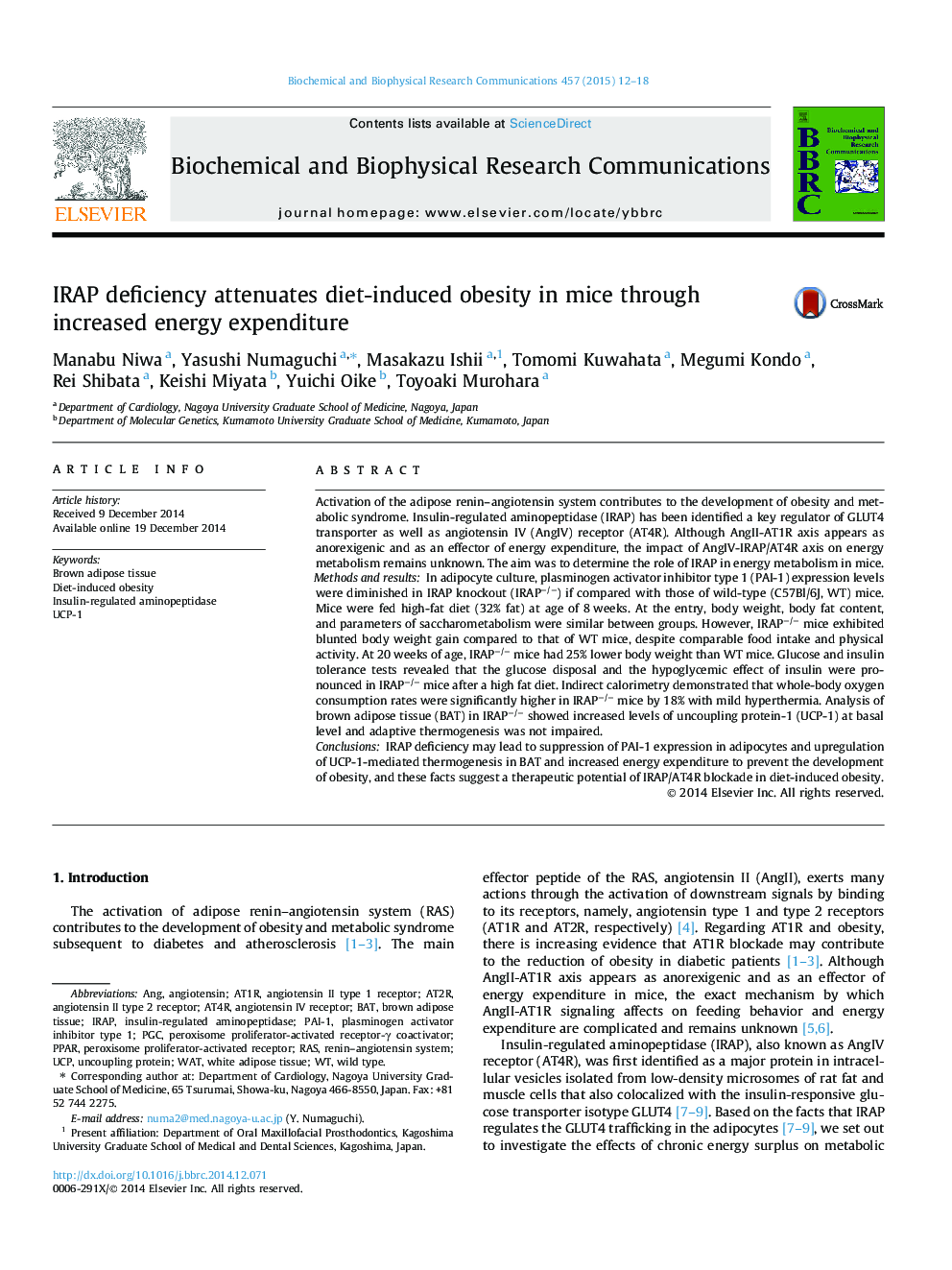| کد مقاله | کد نشریه | سال انتشار | مقاله انگلیسی | نسخه تمام متن |
|---|---|---|---|---|
| 1928249 | 1050330 | 2015 | 7 صفحه PDF | دانلود رایگان |

• IRAP controls metabolism through energy expenditure.
• IRAP-deficient mice were protected from diet-induced obesity with normal behavior.
• IRAP-deficient mice exhibited suppression of PAI-1 expression in adipose tissue.
• IRAP deficiency is strongly associated with UCP-1 upregulation in BAT.
Activation of the adipose renin–angiotensin system contributes to the development of obesity and metabolic syndrome. Insulin-regulated aminopeptidase (IRAP) has been identified a key regulator of GLUT4 transporter as well as angiotensin IV (AngIV) receptor (AT4R). Although AngII-AT1R axis appears as anorexigenic and as an effector of energy expenditure, the impact of AngIV-IRAP/AT4R axis on energy metabolism remains unknown. The aim was to determine the role of IRAP in energy metabolism in mice.Methods and resultsIn adipocyte culture, plasminogen activator inhibitor type 1 (PAI-1) expression levels were diminished in IRAP knockout (IRAP−/−) if compared with those of wild-type (C57Bl/6J, WT) mice. Mice were fed high-fat diet (32% fat) at age of 8 weeks. At the entry, body weight, body fat content, and parameters of saccharometabolism were similar between groups. However, IRAP−/− mice exhibited blunted body weight gain compared to that of WT mice, despite comparable food intake and physical activity. At 20 weeks of age, IRAP−/− mice had 25% lower body weight than WT mice. Glucose and insulin tolerance tests revealed that the glucose disposal and the hypoglycemic effect of insulin were pronounced in IRAP−/− mice after a high fat diet. Indirect calorimetry demonstrated that whole-body oxygen consumption rates were significantly higher in IRAP−/− mice by 18% with mild hyperthermia. Analysis of brown adipose tissue (BAT) in IRAP−/− showed increased levels of uncoupling protein-1 (UCP-1) at basal level and adaptive thermogenesis was not impaired.ConclusionsIRAP deficiency may lead to suppression of PAI-1 expression in adipocytes and upregulation of UCP-1-mediated thermogenesis in BAT and increased energy expenditure to prevent the development of obesity, and these facts suggest a therapeutic potential of IRAP/AT4R blockade in diet-induced obesity.
Journal: Biochemical and Biophysical Research Communications - Volume 457, Issue 1, 30 January 2015, Pages 12–18